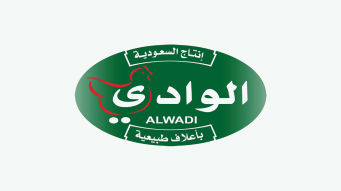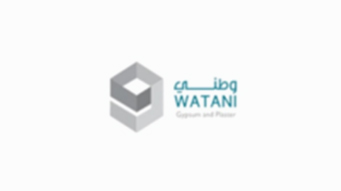
Water sources in the Kingdom between present and future
Saudi Arabia suffers from extreme weather conditions, high evaporation rates, and limited rainfall. And since the Kingdom does not have any permanent water bodies. Therefore, the water sources in Saudi Arabia are mainly deep aquifers and desalination.
Types of water resources in the Kingdom
First: the surface water
The surface runoff in dams is one of the most important main sources of water in Saudi Arabia, where the average rainfall recorded in 2019 was 59 mm, and the surface runoff in dams was estimated at 970 million cubic meters. However, the country suffers from a very low annual rainfall, with the exception of the Asir region in the southwestern parts of the Kingdom, which receives an average of about 300 mm of rainfall annually.
There are 522 dams across the country, with a capacity of 2.3 billion cubic meters to facilitate the storage and recharge of runoff. The total amount of water consumed by dams is about 1.6 billion cubic meters/year.
Second: groundwater
Groundwater types are divided into two types:
Rnewable groundwater
Most of the runoff water seeps into the ground to recharge the shallow aquifers located along river valleys and down alluvial fans and plains in various regions. These aquifers are usually unconfined, small in size, and have water levels that respond quickly to local precipitation. Some of the shallow aquifers are Khuff, Tawil, Arma, Al Jawf, Sakaka, Al Jalah, and Al Jubail. The total renewable groundwater is estimated at 2.8 billion cubic meters/year.
Non-renewable groundwater
Groundwater in the deep layers of sandstone is non-renewable water, confined to sand and limestone formations with a thickness of about 300 meters at a depth of 150-1500 meters. Deep rocky aquifers are sedimentary, usually sandstone and limestone, and extend over thousands of square kilometers with little natural recharge. Among these aquifers are Al-Saq, Al-Wajid, Tabuk, Al-Manjour-Dharma, Al-Wasea-Al-Bayyadh, Umm Radhuma, and Dammam-Neojin, which are the main aquifers.
The capacity of fossil groundwater reserves has been verified in several studies and has been estimated to be between 259-761 billion cubic meters with an effective annual recharge of 886 million cubic meters. Fossil groundwater reserves have been depleted over the past decades.
The average annual groundwater withdrawal rate is 20 billion cubic meters, while the annual recharge is only 2.8 billion cubic meters. The additional amount of groundwater is extracted from fossil groundwater in the Sag aquifer, which has a proven reserve of 103,360 MCM.
During the past two decades, the water level in this aquifer has decreased by 60 meters due to intensive consumption by the agricultural and domestic sectors. Renewable and non-renewable groundwater is mainly used in the agricultural sector, which constitutes about 85% of the total groundwater withdrawn. If the current withdrawal rates continue, the available reserves will be exhausted within 50 years.
Unconventional water sources
Desalinated seawater
The Kingdom of Saudi Arabia is one of the largest producers of desalinated water, and although Saudi Arabia is the first country in producing desalinated water in the world, it covers only about 13.9 percent of the total water consumption in Saudi Arabia. The country has 35 desalination plants on the west and east coast, with a total capacity in 2015 estimated at 6.28 billion cubic meters per day. Nearly 70% of the national water supply comes from desalination.
The Saline Water Conversion Corporation (SWCC) is the largest producer of desalinated water, and owns the majority of desalination plants in Saudi Arabia, accounting for 73% of the total production capacity. To meet the growing demand for potable water, which is expected to reach 8.5 million cubic meters per day by 2025, the corporation aims to increase its installed production capacity to about 8.8 million cubic meters per day by 2030.
Treated wastewater
The total amount of municipal wastewater production has increased due to population growth. Wastewater is treated in a total of 99 wastewater treatment plants. In 2019, the amount of treated wastewater reused amounted to 4.9 million cubic meters/day, which is equivalent to 17.26% of the total quantities of treated wastewater. The amount of treated wastewater is expected to increase by 4% annually between 2025 and 2050.
Agricultural irrigation and landscape irrigation consume about 59% and 16% of treated wastewater, respectively.
While the industrial sector consumes the equivalent of 13% of the total treated wastewater, while 8.5% of it is used to recharge groundwater aquifers.
Water Infrastructure in Saudi Arabia
In order to overcome water scarcity and increasing demand, investments have been made in the water infrastructure in Saudi Arabia:
- Water and sewage networks by laying the main water pipelines.
- Maintaining and extending domestic water connections, and improving the wastewater collection network.
- The spread of dams and the expansion of their construction to facilitate storage, surface run-off, and groundwater recharge.
- Construction of various water treatment plants.
Water desalination plants to increase water sources
Between 1980 and 2011, 30 desalination plants were built along the coasts of the Red Sea and the Persian Gulf. To produce the largest amount of desalinated water in any country. By 2020, there were 33 desalination plants in Saudi Arabia.
The main technologies used in water desalination:
- Multiple Effect Evaporation (MED).
- Multistage flash (MSF) distillation.
- Reverse osmosis (RO).
The daily production in 2017 amounted to about 4 million cubic meters using various desalination techniques. Of the total desalinated water currently produced, 77.5% is produced by multi-stage flash distillation. 20.5% by reverse osmosis and 2% by plants operating with multi-effect evaporation technology.
Saudi Arabia produced 7.65 MCM of desalinated water in 1980. This amount increased to about 1,070 MCM in 2004 and 1,048 MCM in 2009.
Desalinated water is mainly used for domestic purposes in major cities. Among these cities, Riyadh, Makkah, Madinah, and Dammam consume nearly 90% of the desalinated water.
Sewage treatment plants
There are 99 wastewater treatment plants in Saudi Arabia. Where Riyadh, Mecca, and the Eastern Province represent about 79% of the Kingdom’s total production capacity.
If you want to know the importance of wastewater treatment, you can read this article.

























